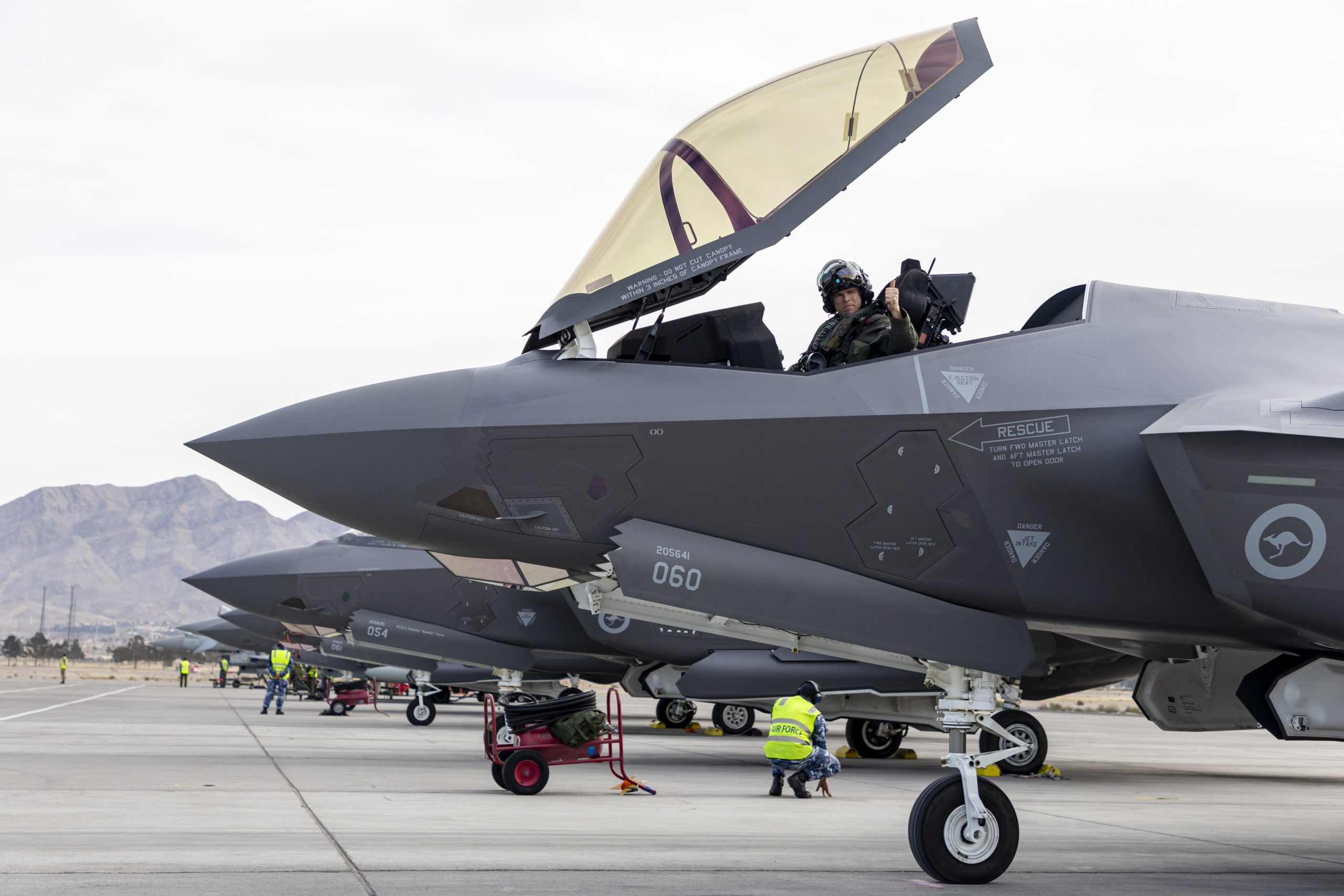The RAAF at Red Flag Nellis 24-1
Royal Australian Air Force (RAAF) aviators have joined counterparts from the United States and United Kingdom on Exercise Red Flag Nellis 24-1, considered one of the world’s toughest air combat training environments, to hone their war-fighting skills.
About 150 RAAF personnel and six F-35A Lightning II aircraft are participating in the exercise, running 15 January to 2 February at Nellis Air Force Base in Nevada, United States.
The members are from 3 Squadron, 1 Combat Communications Squadron, 3 Control and Reporting Unit, 114 Mobile Control and Reporting Unit, 87 Squadron and 1 Security Forces Squadron
Exercise Red Flag was established by USAF in 1975 after the Vietnam War revealed the first 10 combat missions to be the most dangerous for aircrews. The first 10 missions of a modern air campaign are recreated in Red Flag to provide an invaluable experience for all participants.
RAAF’s Commanding Officer of 3 Squadron Wing Commander Adrian Kiely said this is the first time RAAF F-35As have participated in Exercise Red Flag Nellis.
“Generations of RAAF aviators have come to this exercise since 1980, and it continues to evolve and reflect the threats and challenges faced on modern operations,” Wing Commander Kiely said.
“Missions are conducted to the nearby Nevada Test and Training Range, and further to the southwest of the United States where we can integrate with maritime units.
“Exercise Red Flag Nellis will test every facet of our F-35A capability, allow us to integrate with our American and British allies, and practice how we project force on combat operations.”
This year’s exercise involves about 3000 personnel and up to 100 aircraft conducting large force employment missions in a range of scenarios.
The exercise is renowned for its use of ‘aggressor’ forces including simulated enemy fighter aircraft, ground-based radars and simulated surface-to-air missiles – and even cyber and space-based elements that simulate threats for each mission.
Commanding Officer of 114 Mobile Control and Reporting Unit, Wing Commander Peter Mole, will lead the RAAF Tactical Command and Control Team in the exercise.
“There is a large number of aircraft all fulfilling different roles across each mission at Exercise Red Flag Nellis, but no single aircraft is the ‘silver bullet’ that can do it all alone,” Wing Commander Mole said.
“The Tactical Command and Control team’s role is to manage and control all of those aircraft, alongside other elements and units working in the ground, maritime, cyber and space-based domains, to accomplish the mission.
“The scale and complexity of Exercise Red Flag Nellis cannot be replicated elsewhere, which makes it an outstanding place to build experience and reinforce our close working relationship with the United States and United Kingdom.”
Published by Australian Department of Defence on 15 January 2024.
And in a story published on 2 February 2024, the wrap up of the exercise was highlighted:
Exercise Red Flag Nellis 24-1 has concluded after three weeks of high-intensity air combat training at Nevada and airspace in the southwest of the United States.
Working with counterparts from the United States and the United Kingdom, RAAF deployed six F-35A Lightning II aircraft to Red Flag Nellis for the first time, along with an air battle management team to coordinate the missions.
About 3000 personnel (including 150 from RAAF) conducted a simulated fifth-generation air campaign in the challenging environment of a congested training airspace.
Commanding Officer 3 Squadron Wing Commander Adrian Kiely said the exercise helped to ensure RAAF F-35As could meet Defence Strategic Review capability priorities.
“The F-35A is the world’s most advanced operational strike fighter, but its full potential is realised when it’s integrated within a wider network of sensors and systems like we see at Exercise Red Flag Nellis,” Wing Commander Kiely said.
“The mission scenarios require deep planning and coordination to overcome a highly sophisticated air defence network, or precise integration across many domains for us to reach a distant target, all in the face of live and simulated threats.
“Exercise Red Flag Nellis 24-1 provided a challenging environment for the participant nations involved, testing our interoperability and allowing us to better understand what we each bring to the fight.”
Commanding Officer 114 Mobile Control and Reporting Unit Wing Commander Peter Mole led the RAAF Tactical Command and Control Team that coordinated and directed missions during the exercise.
“There are few opportunities for us to work alongside the United States and the United Kingdom in an exercise as sophisticated as Red Flag Nellis, so this is a unique experience for many,” Wing Commander Mole said.
“Each mission is recorded and immediately debriefed, which allows participants to better understand how the wider mission played out and the outcome of their decision-making.
“We leave Exercise Red Flag Nellis 24-1 with a better understanding of how our tactics and techniques would work in a modern air campaign, and assuredness that we can easily integrate with other nations in the future.”
Featured Photo: Royal Australian Air Force Commanding Officer No. 3 Squadron, Wing Commander Adrian Kiely, prepares to fly a F-35A Lightening II aircraft during Exercise Red Flag Nellis 24-1 in Nevada, USA. Credit: Australian Department of Defence

